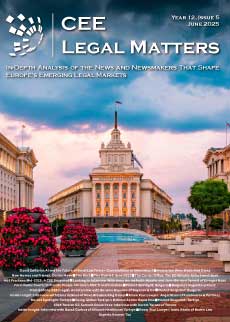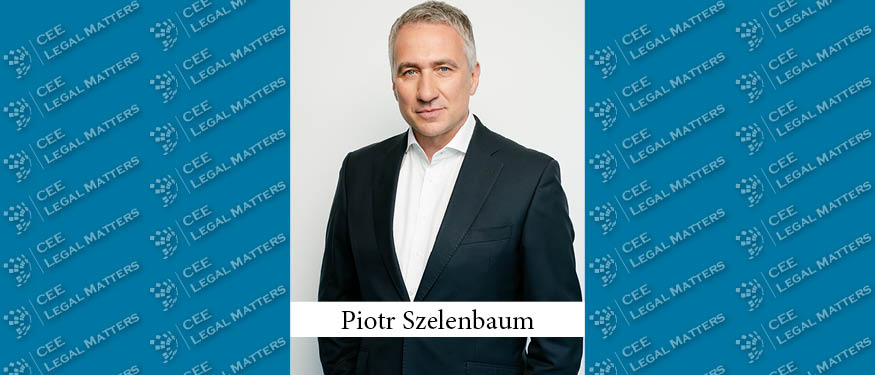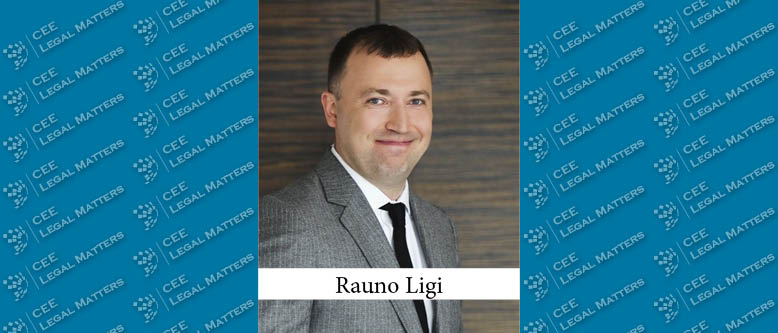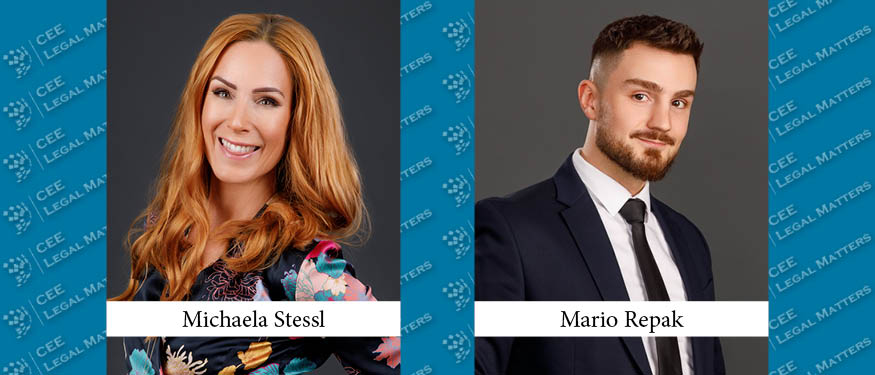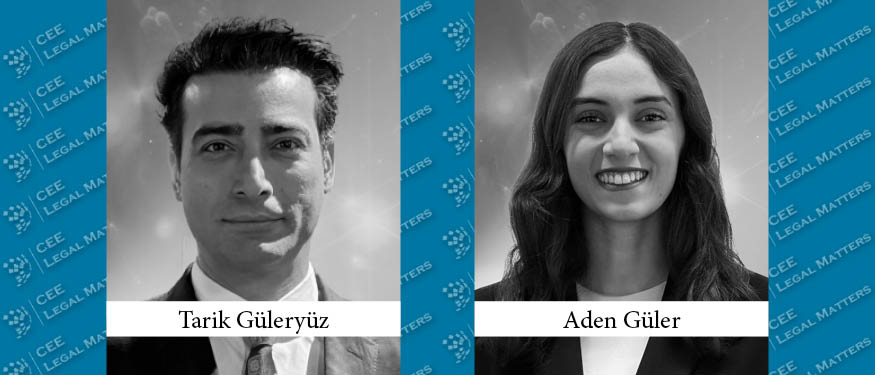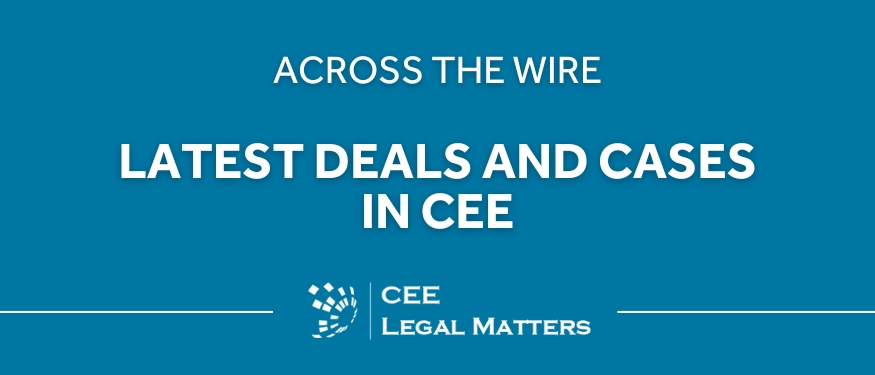This year’s General Counsel Summit – the annual gathering of leading in-house counsel from across Central and Eastern Europe – convened in Warsaw, on June 1-2.
Warsaw – the so-called “Phoenix City” – has indeed risen to the top of CEE’s commercial and legal markets over the past two decades, and it has become a mandatory first target and focus for multinationals, funds, and international law firms venturing into the region. It was past time for the GC Summit to make its Polish debut.
And, with Slaughter and May and Wolf Theiss as the Chairman Sponsors, and CMS as a Knowledge Partner Sponsor, WKB Wiercinski Kwiecinski Baehr as a Panel Sponsor, and Kocian Solc Balastik, PRK Partners, TGS Baltic, Vasil Kisil & Partners, and Zuric i Partneri as Basic Sponsors, the third iteration of the GC Summit was the biggest and most successful professional development conference for senior in-house counsel in CEE yet.
What follows is a snapshot of the two-day event, which involved well over 150 attendees and a winning roster of prominent speakers, engaging presentations, and critical exchanges of information on subjects such as effective time and personnel management, strategies for dealing with boards and external counsel, compliance updates, new forms of and ways of using technology, and much more.
The event was opened by Jonathan Marks of Slaughter and May, who, as the Chairman of Day 1, welcomed everyone and introduced the Keynote Speaker: Judith Gliniecki of CEE Equity Partners.
Gliniecki set the tone perfectly for the first half of Day 1, which focused on the role of the General Counsel in today’s business. Explaining her presentation, Gliniecki explained: “Given that I was delivering the Keynote Address, I hoped to challenge and inspire the discussions over the two days of the Summit. To ground my remarks, I searched through the CEE Legal Matters 2017 Corporate Counsel Handbook for common themes and perceptions about the GC role. I did not, however, just want to rehash the themes from the Handbook. I am concerned about the direction that politics and society is taking, based on recent, surprising election results from various countries. Our work as GCs is at the intersection of many, sometimes conflicting, concerns within our companies. I believe that this skill of being able to weigh many different considerations and viewpoints can make a GC a valuable contributor to constructive dialogue.”
That theme continued with Shami Iqbal of Spencer Stuart leveraging his experience in the executive search and leadership industry to talk to the audience on “Tips on What the CEO and Board are Looking for in a GC.”
Drawing on his fresh two-year C-suite experience at his company and the increasing importance of lawyers in business decision-making, Rytis Valunas of KN spoke about the need for in-house counsel “to think about business as businessmen, and to make sure legal decisions and solutions are aligned with business strategy.” Valunas described the takeaway he hoped the audience would be left with: “Do you know and understand well the business strategy of your company – your clients? Gone are the days when lawyers were naysayers. Now it’s about preparing a package of solutions with different levels of risk and working closely with the CEO and the Boards to choose the most acceptable for business.”
Indeed, “exceptional legal technical skills are important for General Counsel, but there are also many soft skills – such as communications, relationship building, and strategic thinking – which can make a GC a real and trusted business adviser,” according to Alexey Statsenko of EY, who held the subsequent presentation on “The General Counsel as a Trusted Advisor.” According to Statsenko, the role of General Counsel and the in-house legal function is a hot topic in today’s professional community. “Both our own experience and surveys performed among business leaders show that they want us to be their business advisors and they want to rely on our advice in business decisions,” he explained. “The role of the GC as a trusted business advisor requires a specific set of skills and competencies, and we at EY believe we know what those competencies are. So I thought it would be a good idea to share that knowledge of a leading global consultancy firm with my colleagues from other industries.”
But General Counsel have little opportunity to consider their strategic role until they ensure their own departments are running as smoothly and as efficiently as possible first. It is for this reason that Vaida Zalobaitiene of Axis spoke about “How to Make the In-house Legal Function LEANer”– a philosophy in which standardized tasks and processes form the foundations for continuous improvement.
In his recent article for the CEE Legal Matters Corporate Handbook, Marcin Bryniarski of Oknoplast asserted that a “key element” for GCs “is the people we work with – the members of our in-house teams.” The GC Summit was a perfect opportunity to discuss the specific challenges posed by the evolving workforce for in-house legal functions as well. “A number of my colleagues both inside and outside the legal profession look upon the Millennials with concern, and while some indulge them, most think that they will not make proper lawyers, in the full meaning of that term, or committed lawyers, because a good lawyer has qualities and stands up for values that are the exact opposite of those of the Y Generation,” he explained, adding: “I think they are wrong. Millennials can make fantastic lawyers and members of our teams, if we just put aside our prejudices and stereotypes and are open to what they offer.”
The first half of Day 1 concluded with a joint presentation by Jonathan Warne of CMS and Krzysztof Korzeniewski of Bank Handlowy w Warszawie focused on the attributes that help in-house lawyers become strategic business counsel, capable of operating at the highest level within their organizations. “Our ‘8C’ model is the fruit of hundreds of conversations with GCs about their work,” explained Warne. “It sums up eight key aspects of strategic business counsel life, in a model designed to help GCs who are thinking about improving and refining what they do and how they do it.”
The second half of Day 1 moved the focus to the externals of the company. Karel Budka of Invia Czech Republic spoke about his experience leading the in-house legal function for his company’s recent cross-border acquisition. “The choice for the topic was quite clear since back [when I agreed to speak at the GC Summit] the post-acquisition process was the main topic at our company. I found this topic quite interesting because it is quite rare for a Czech company to acquire a German one and it taught me a lot. The post-acquisition process may be even more interesting than the acquisition itself, since it is more about abstract and sophisticated processes and there is always the interpersonal factor, which is very interesting to share,” he explained. The main takeaway of the session? According to Budka: “there is more than just the pure legal aspect of every acquisition to consider in achieving the goal of having effective cooperation among the legal departments. Long story short, it is a lot about how you treat your new colleagues.”
With Budka setting the tone on deal-making in CEE based on his case-study, the transition to general trends in cross-border deals was a natural one. Jonathan Marks and Richard Jones of Slaughter and May offered the attendees an extensive summary of these trends in cross-border deals and financing in Europe as a whole and in CEE in particular.
But expansion is not only achieved by physically going to new markets. With an ever-increasing number of CEE companies selling products/services abroad, many GCs had expressed interest in hearing about the legal challenges involved in that process. Martin Strnad of the Czech software producer YSoft tackled the topic. “I aimed at colleagues in newer, perhaps still smaller firms, and focused on a few key surprises our legal department has faced in going forward and growing with the company.”
Expanding and growing a business requires a great deal of care in organizing corporate governance as well, and Neven Vrankovic of the Atlantic Group reflected on corporate governance pitfalls in the next session. He used Croatia’s Agrokor group as a case study, describing a company undergoing such enormous financial turmoil that experts have projected that its troubles will impact the country’s GDP. Among the main corporate governance pitfalls that he warned about were accounting and auditing issues; executive compensation malpractice; risk management system failures; the absence of any objective and independent supervision; the failure to address problems before they escalated; and a lack of accuracy and transparency within the company’s disclosure policy.
Issues raised in previous sessions were considered in greater detail in a subsequent panel discussion moderated by Stefan Feliniak from Wolf Theiss. The panel members were Neven Vrankovic, who offered his insights on the challenges and best practices of selling abroad from the perspective of the Atlantic Group (which does business across the Balkan region), Maie Talts from the private equity fund EfTEN Capital (who has led several deals of the company investing cross-border in the Baltics out of Estonia), and Daiva Dauniene of Litgrid AB (reflecting on her experience in cross-border energy projects).
And because expanding abroad often requires engagement with regulators, the sessions that followed focused on just that. In the first such presentation – “The Rising Importance of Complex Interesection of Legal and Public Policy: How to Make It work” – Natko Vlahovic of the Croatia-based Vlahovic Group consultancy demystified lobbying in CEE.
Subsequently, Lukasz Slawatyniec, the Legal Director for Europe at Eli Lilly International, spoke about “Approaching Regulatory Agencies in CEE” from an in-house perspective. He described best practices and useful guidelines and considered the involvement of the in-house legal function on regulatory matters.
The last session of the day consisted of a panel discussion co-moderated by Jonathan Clark of Slaughter and May and Valerie Hohenberg of Wolf Theiss on cross-border disputes in CEE. Joining them on the panel were Ferdinand Trauttenberg of FCC Austria Abfall Service AG, Mariola Lisewska of Polipol Group Poland, Rytis Valunas of KN, and Marko Djinovic of the Ljubljana Arbitration Centre at the Chamber of Commerce and Industry of Slovenia. The panel explored preliminary considerations before commencing court proceedings, how to decide on how, when, and where to resolve disputes, how to manage the litigation/arbitration process, how to gather evidence, and how to approach settlements and next steps after a judgement/award – whether successful or unsuccessful.
Of course, the Summit is about much more than lectures, presentations, and panels. It’s also, fundamentally, about networking and making valuable contacts with peers who share similar challenges, frustrations, and responsibilities. And, of course, about socializing, making friends, and fun. Accordingly, at the end of Day 1, attendees gathered at the Cocktail Function and Gala Dinner, which also included an award ceremony for the Market Makers (see page 28).
Ronald Given of Wolf Theiss welcomed everyone to Day 2 of the Summit. He acted the as Chairman and Moderator for the rest of the day – the first part of which considered the future of the legal profession in general, and that of the in-house legal function in specific, in light of technological developments both recent and on the horizon.
Alexey Amvrosov of IBM made an excellent first presentation of the day by introducing the audience to developments in cognitive computing and artificial intelligence, as well as to useful applications to the in-house legal function of Watson, IBM’s cognitive system. For example, he pointed to one large FSS company using Watson for Outside Counsel Insights (OCI) to unlock USD 392 million in potential savings, which represented 33% of the company’s total annual outside counsel spend.
Then Jochen Engelhardt, Microsoft’s Head of Legal in Central and Eastern Europe, spoke about the “Fourth Industrial Revolution,” which he explained is “all powered by the cloud.” This presents considerable challenges for the in-house legal function from security, privacy control, compliance, and transparency perspectives. Towards meeting these challenges, he proposed a framework applied by Microsoft that looks at building a “trusted, responsible, and inclusive cloud.”
Once developments in technology were addressed, Stathis Mihos of Pfizer talked about how lawyers themselves need to adapt to this new world in a session titled “Images from the Future of Lawyering.” According to Mihos, “technological advancements and changes in the services delivery models might sooner or later impact our profession. I thought we should be aware of the changing world we live in and spend some time discussing this topic,” adding that “in-house lawyers, in order to remain relevant in today’s business world, should embrace and if possible master technology while at the same time improve their soft skills and emotional intelligence.”
The last presentation within the technology theme was delivered by Siarhei Zhuk of EPAM Systems. With software solutions increasingly being turned to in order to address both the legal function’s needs and business as a whole, Zhuk focused on what GCs need to know when it comes to software development agreements – from pricing models to IP rights, to limitations of liability, and taxation. As a representative of a software development company himself, he also offered the audience several recommendations on how to address each of these aspects when negotiating such agreements.
While Zhuk touched upon the importance of IP in terms of software specifically, Agnieszka Wiercinska-Kruzewska of WKB Wiercinski, Kwiecinski, Baehr noted that “modern businesses can hardly exist without IP,” pointing out that “it is needed to run companies (software) and to gain competitive advantage (products, services).” Wiercinska-Kruzewska was the moderator of the next session: a panel discussion dedicated to effectively managing IP rights and protecting innovation within a company. The panel also included Martin Strnad of YSoft, Siarhei Zhuk of EPAM Systems, Andrzej Tomasz Oryl of Intive-BLStream, and Marek Szydlowski of TVN S.A. The panel considered a number of fundamental considerations: What areas of business operation are IP sensitive? Are managers and staff aware of the importance of IP for the company? Is it managed centrally? How do companies identify the IP that must be managed? What are the biggest challenges in effective management? Is the available system of court procedures sufficient? What are the biggest risks connected with litigating IP rights? What alternative ways of settling IP disputes are available?
In an earlier essay for CEE Legal Matters, Tobiasz Adam Kowalczyk of Volkswagen wrote: “In the legal industry, technological developments – from advancements in standard legal tasks to big data analytics – are all taking center stage in the work being done to improve the provision of legal services. Nonetheless, the way lawyers operate has changed little in the last twenty years. Although we use new tools and devices, supported by information and communications technology, we often do so in a way that merely replaces the old functionality without truly embracing the power of technology in a bid to become industry leaders and to improve our professional lives.” The panel moderated by Kowalczyk focused on ways of adapting to this new technological world. The panel, which wrapped up the sessions dedicated to technology and innovation, also included Alexey Statsenko of Ernst & Young, Bogdan Plesuvescu of Banca Transylvania, Alexey Amvrosov of IBM, Stathis Mihos of Pfizer, and Melania Amuza of E.ON.
In the second part of the day, Karolis Gudas of Vilnius CHP (Lietuvos Energija Group) talked about financial instruments, state aid, and competition in the energy sector in the EU. In his talk, he also explored the variety of available financial instruments available in the European Union to fund projects, and the interface of each of the financial instruments with competition and state aid law. “I realized that many fellow GCs are interested in hearing about the organization of these legal work issues,” he added. “Thus I was glad to extend my presentation to include management issues.”
Also on the subject of competition, Adrian Ster from Wolf Theiss delivered a presentation on “The Implementation of the Private Damages Directive in the CEE Region.” Ster offered the audience insights into the raison d’etre of Directive 2014/104, its key provisions, and its ramifications in CEE. Looking ahead, he noted that the implementation of the Directive and the relatively limited costs involved will considerably increase the likelihood of claims for damages. “It is difficult to predict the manner in which the national courts will implement concepts like disclosure and estimation of losses. In terms of the civil law regimes, there are no binding precedents, which increases uncertainty,” he explained, noting that “the envisaged adoption of an EU regime for collective actions might further increase the appeal of claims for damages.”
The competition focus was concluded with a panel discussion moderated by Jordan Ellison of Slaughter and May on “Cartels and Anti-Competitive Agreements: Recent Developments and Practical Tips.” The session included input from Aleksander Stawicki of WKB, Karolis Gudas of Vilnius CHP (Lietuvos Energija Group), and Marcin Bruszewski of Fortum Power and Heat Polska. It kicked off with a survey on hot topics in EU/CEE antitrust, with Gudas looking at Lithuanian developments and the recent Gazprom case, Stawicki and Bruszewski looking at Poland and other CEE developments, and Ellison offering insights on EU-level developments including e-commerce, the focus on cross-border trade restrictions and on online sales restrictions, and information exchange. Areas of divergence between the EU and CEE competition authorities’ approaches were explored, followed by an examination of the most difficult grey areas, such as information exchange. Ellison then looked at applying for leniency, changes in EU practice on cartel settlements, and the increasing role of private litigation. Stawicki also pointed to Polish authorities’ increasing focus on cartels and how to deal with an investigation.
The last two sessions called for ways in which in-house counsel can and should contemplate adapting their teams and their roles to meet new realities. In the first, Gabija Kuncyte of EPSO-G – Lithuania’s state run holding of electric energy and gas infrastructure, transmission system, and biofuel exchange operators – used corporate governance reform as a case study on how GCs/Heads of Legal can implement change. She explained that, “I genuinely believe that corporate governance in our everyday legal work is one of the topics that is still discussed too little. In addition, lawyers must become managers and strategists if they want to survive in today’s world or compete against AI. And combining these two issues, I think, is a must for any GC to invest into soon, to ensure the long-term success and stability of the company he works for.” She added: “The main idea is that even seemingly very difficult projects can be handled, if you break them into pieces that are handled bit by bit. If you delegate and vest a lot of trust on your team – and I mean the entire team in the company, with the legal team being only part of the puzzle. One cannot do such projects alone – or at least not with much success.”
In the last session, Dominika Niewiadomska-Siniecka of Polish mobile telecom operator P4 (PLAY), proposed a new model of working with external counsel. She argued for a push to not only receive “comprehensive legal services” but “comprehensive care,” which she explained should entail much more than just legal advice. On top of legislative consulting, she insisted that GCs could, and should, expect: (a) analysis and reports other than legal (such as reports that may be used by other business departments in the company); (b) legal audits, legal alerts, and guidelines (such as various legal audits (such as mock dawn raids, reviews of compliance programs, and reviews of regulations entering into force or already in force along with a description of the most important consequences/impact on the business); and (c) additional experts (such as financial advisors for incentive programs, patent attorneys, land valuation experts, and so on).
With that, and one final thank you from the hosts, the event drew to a close, as the attendees dispersed, talking animatedly in twos and threes, freshly armed for success, and as the organizers immediately began planning for next year’s fourth annual GC Summit, scheduled for Prague in spring 2018.







